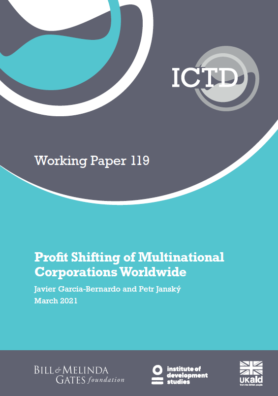Working Paper 119
Multinational corporations (MNCs) avoid taxes by shifting their profits from countries where real activity takes place towards tax havens, depriving governments worldwide of billions of tax revenue. Earlier research investigating the scale and distribution of profit shifting has faced methodological and data challenges, both of which we address. First, we propose a logarithmic function to model the extremely non-linear relationship between the location of profits and tax rates faced by MNCs at those locations – that is, the extreme concentration of profits without corresponding economic activity in a small number of low-tax jurisdictions. We show that the logarithmic model allows for a more accurate identification of profit shifting than linear and quadratic models. Second, we apply the logarithmic model to newly available country-by-country reporting data for large MNCs – this provides information on the activities of large MNCs, including for the first time many low- and lower-middle-income countries.
We estimate that MNCs shifted US$1 trillion of profits to tax havens in 2016, which implies approximately US$200-300 billion in tax revenue losses worldwide. MNCs headquartered in the United States and Bermuda are the most aggressive at shifting profits towards tax havens, while MNCs headquartered in India, China, Mexico and South Africa the least. We establish which countries gain and lose most from profit shifting: the Cayman Islands, Luxembourg, Bermuda, Hong Kong and the Netherlands are among the most important tax havens, whereas low- and lower-middle-income countries tend to lose more tax revenue relative to their total tax revenue. Our findings thus support the arguments of low- and lower-middle-income countries that they should be represented on an equal footing during international corporate tax reform debates.
